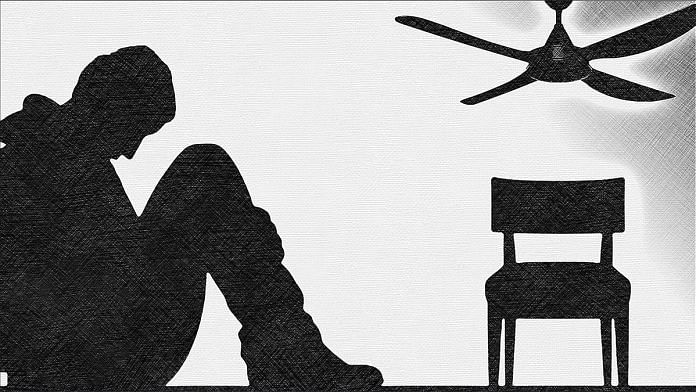New Delhi: Children and adolescents, especially males, who self-harm are likely to commit suicide later, said a study by the medical journal The Lancet.
The study, released Wednesday in the UK, found that children and older adolescents, who have self-harmed repeatedly, are at the higher risk of committing suicide in the later stages of their life.
“Switching of the method from self-harm to suicide was common, usually from self-poisoning to self-injury. Self-harm is also associated with risk of death from accidental poisoning, particularly involving drugs of abuse, especially in young males,” the study said.
The study holds relevance for India as the country has the highest suicide rate in the South-East Asian region, according to the World Health Organization’s (WHO) report released in September last year.
The WHO pegged India’s overall suicide rate at 16.5 suicides per 1,00,000 people. India also had the third-highest female suicide rate (14.7) in the world, after Lesotho (24.4) and Republic of Korea (15.4), which is South Korea’s official name in English.
Study divided the deaths into three categories
Conducted in the UK by a team of nine researchers, the study focused on individuals aged 10–18 years who went to five hospitals in Oxford, Manchester and Derby after non-fatal self-harm, between 1 January 2000 and 31 December 2013.
By the end of the follow-up on 31 December 2015, 124 (1 per cent) of 9,173 individuals had died. And of these 124 deaths, 55 (44 per cent) committed suicide.
The study divided the deaths of the individuals into three categories — suicide, accidental deaths and death by other causes.
“Of the 9,173 individuals who presented for self-harm, 55 (0.6 per cent) died by suicide. Most suicide deaths involved self-injury,” it said.
“Suicide risk was higher in males than females. It was higher among patients who presented to the hospital for the first time aged 16–18 years than among those aged 10–15 years, and higher among individuals who used self-injury alone as their method of self-harm than those who used self-poisoning alone or self-injury and self-poisoning,” the study said.
Also read: Ideal diet for humans isn’t affordable for 1.58 billion people, says Lancet study
‘Find individuals who are at risk of committing suicide’
Self-harm is the most important risk factor for subsequent suicide in young people, the study found. It said that “globally, suicide is the second most common cause of death in individuals aged 15–24 years”.
The study, therefore, suggested identification of individuals who are at high risk of suicide following self-harm.
“Assessment of young people who self-harm should include investigation of possible substance use and referral to treatment services, if possible,” according to the study.
It also suggested using research to assess factors that might influence “the pathways between self-harm and suicide, such as the influence of clinical care inputs and life events; the association between self-harm method switching and outcome; and the temporal relationship between repeated self-harm and subsequent suicide”.
“A clear need exists to identify preventive interventions that might reduce risk of self-harm in children and adolescents, repetition of the behaviour and premature death due to suicide and other preventable causes in the self-harm population,” the study said.
Also read: Pollution, climate change, malnutrition will affect our kids for life, Lancet report says







Pure nonsense……